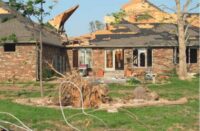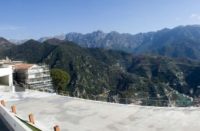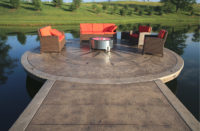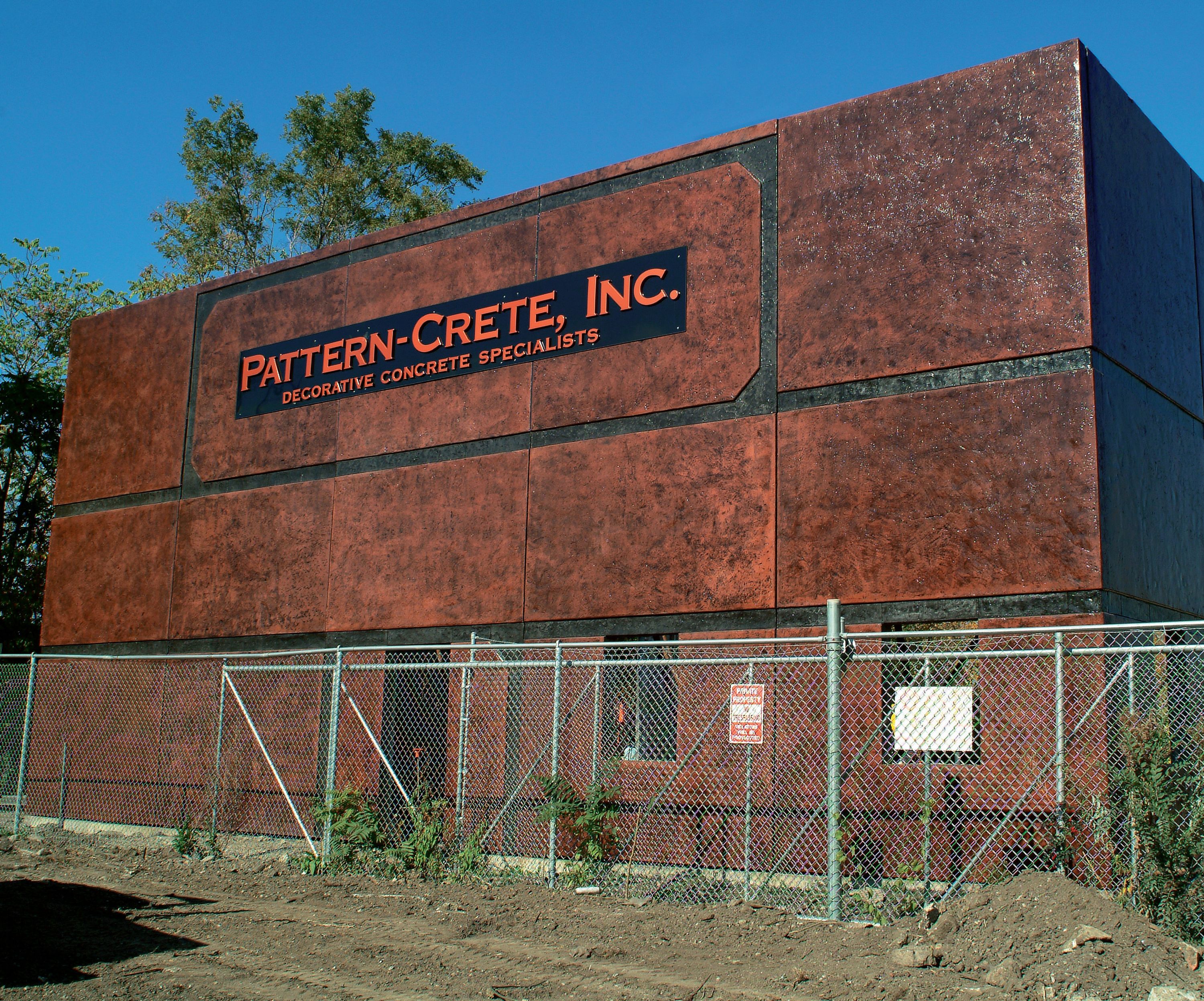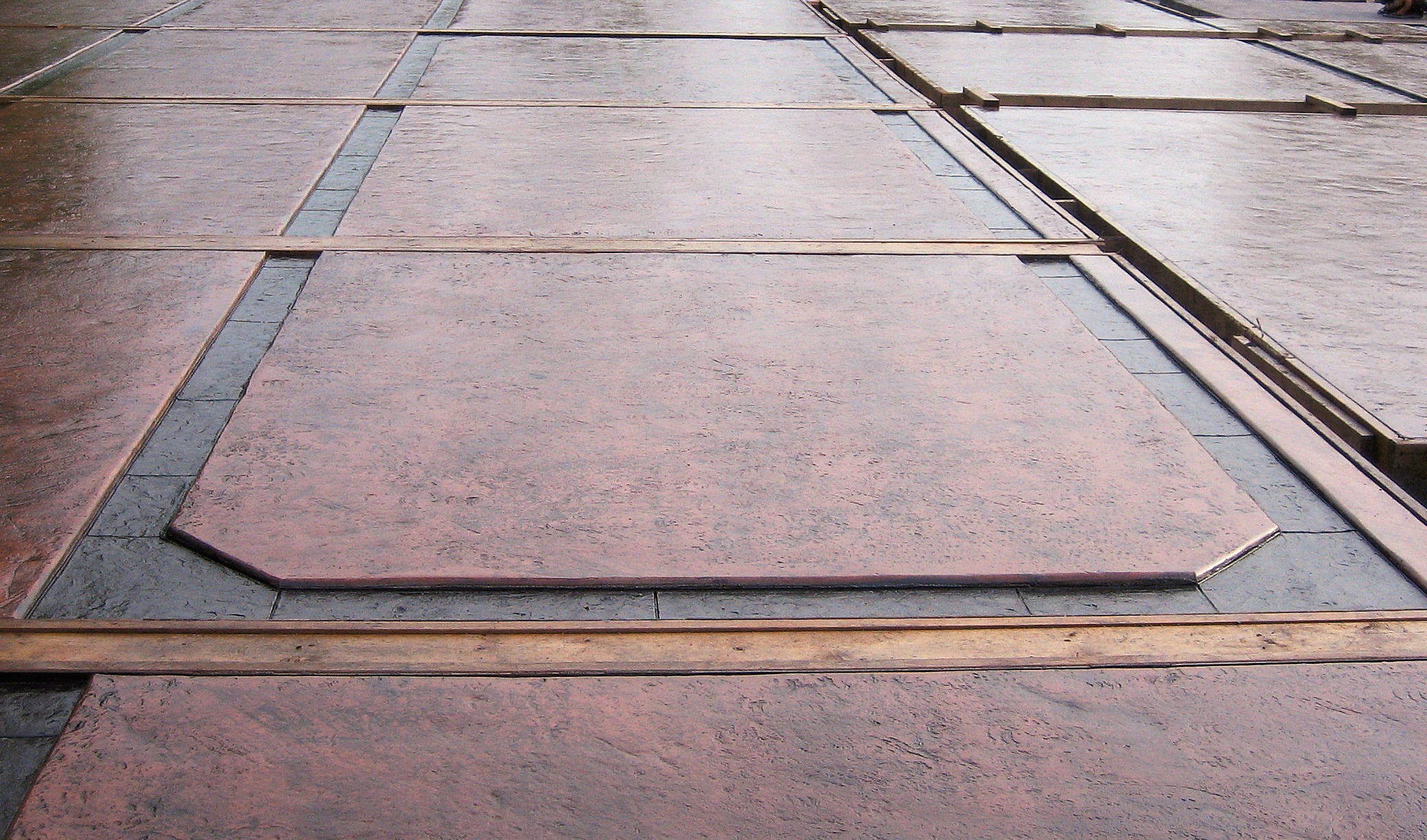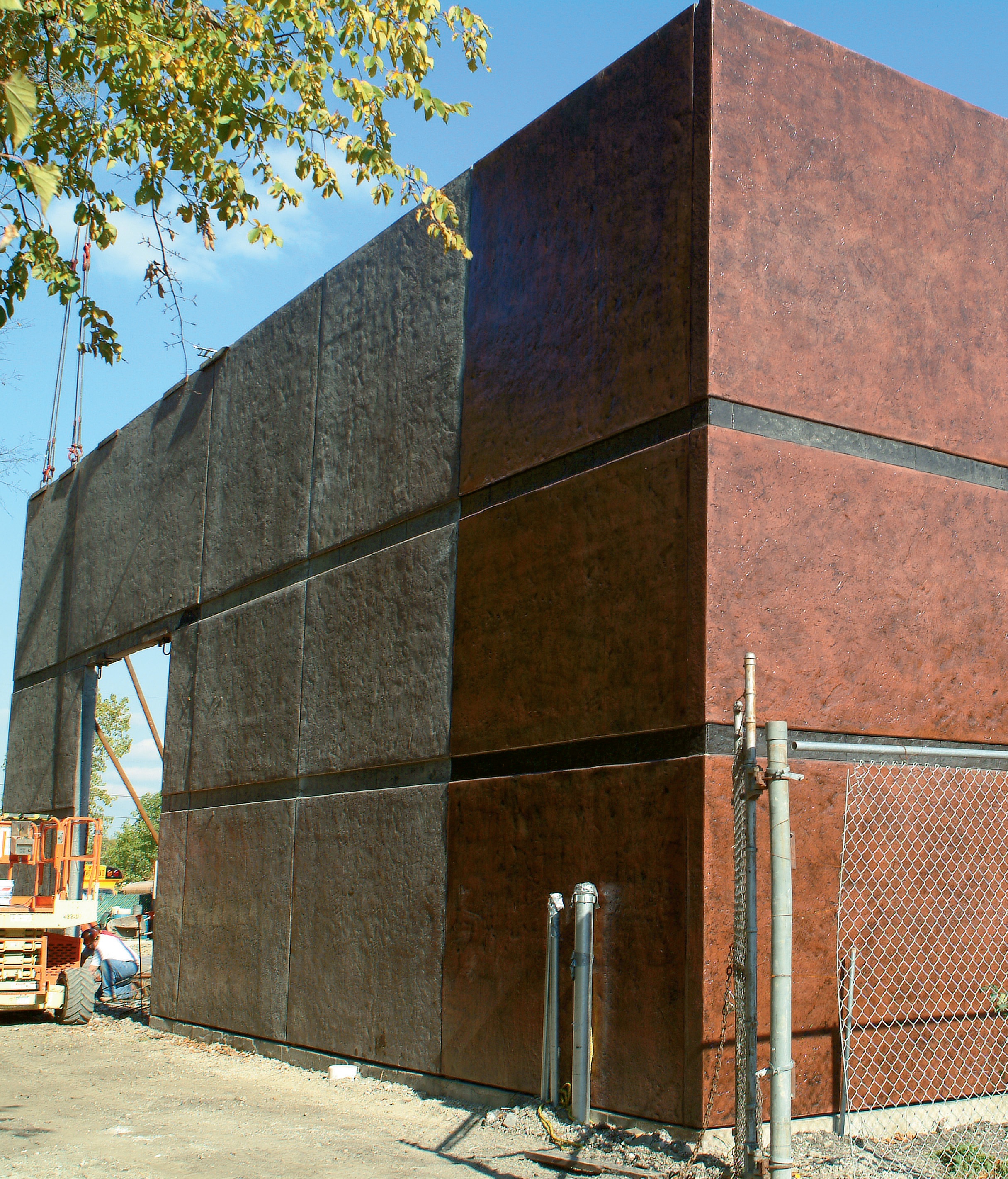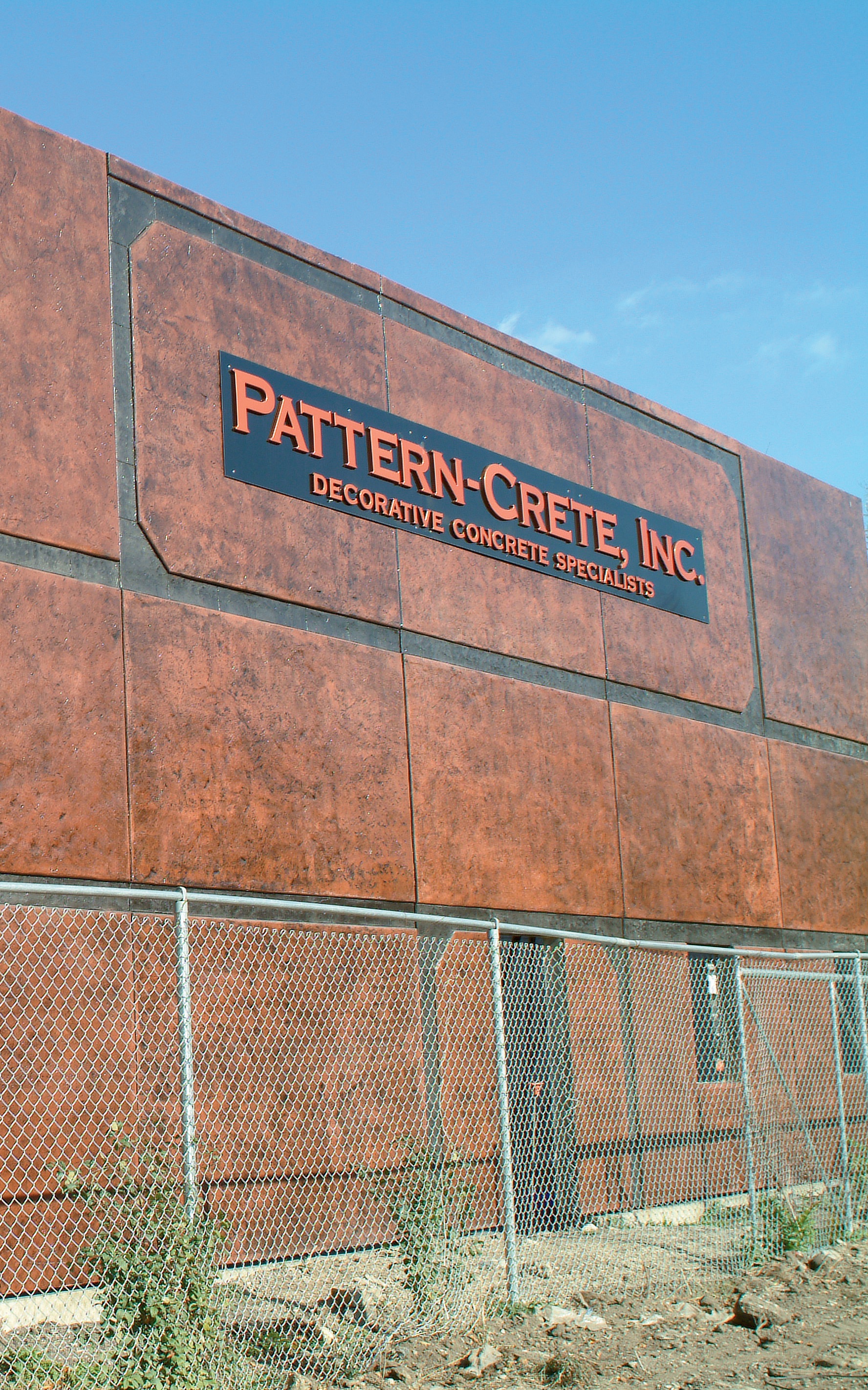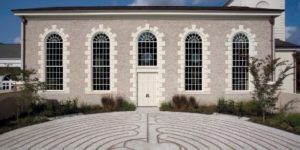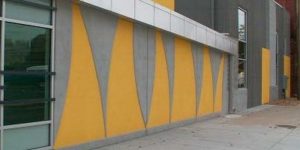It’s a good thing Ken Tucker relishes a challenge, because he faced one when constructing a new warehouse/shop for his company, Pattern-Crete Inc., in Villa Park, Ill. Since he owns a concrete business, he naturally wanted a concrete building. He wanted to use tilt-up construction, but didn’t have the space to cast all the panels at once. That raised the question — would he be able to make the colors match with batches poured a month apart?
He also wanted the building to showcase his business, which is 80-90 percent colored, stamped concrete. Tucker figured he had a better chance at a color match if he used surface colors on the two pours. So he turned the challenge to his advantage by combining tilt-up with standard imprinting techniques.
On the face of it, this approach is quite literally backwards. Traditionally, the face surface of the tilt-up panel is the bottom of the pour, where the concrete meets the form. Tucker’s idea was to turn things around and make the top of the pour the decorative face. He poured the panels into forms set in the only place where there was room — where the building’s foundation was going in. 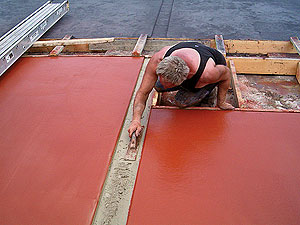 Even there he had only enough room to pour half the panels at once.
Even there he had only enough room to pour half the panels at once.
Tucker poured and finished the concrete, and while it was still wet he broadcast a color hardener. He used Brick Red from Butterfield Color as the field color and accented it with Deep Charcoal. He used the same charcoal for the release agent. Then he imprinted the panels with a heavy stone-texture embossing skin. He created a recessed horizontal band by using a slate pattern border stamp. The border was colored dark charcoal and lines were hand cut for added interest.
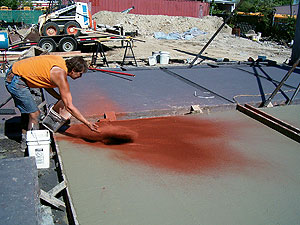 The tricky part was lifting the panels. Each of the 23 panels was 24 feet tall and contained 6.5 yards of concrete. As the name implies, cured tilt-up panels are literally tilted up into place with the form protecting the face. In this case the face was already exposed, so Tucker had to devise a system of lifting hardware and reinforcement to prevent the panels from flexing and breaking. Fortunately he had some experience in structural concrete — a colleague who jokingly called him a “flathead” (flatwork-only contractor) had inspired him to move beyond driveways and patios some time before. Now he relied on his basic understanding of reinforcement and flexural strength. The rest was experimentation. The technique was so successful that Tucker has applied for a patent.
The tricky part was lifting the panels. Each of the 23 panels was 24 feet tall and contained 6.5 yards of concrete. As the name implies, cured tilt-up panels are literally tilted up into place with the form protecting the face. In this case the face was already exposed, so Tucker had to devise a system of lifting hardware and reinforcement to prevent the panels from flexing and breaking. Fortunately he had some experience in structural concrete — a colleague who jokingly called him a “flathead” (flatwork-only contractor) had inspired him to move beyond driveways and patios some time before. Now he relied on his basic understanding of reinforcement and flexural strength. The rest was experimentation. The technique was so successful that Tucker has applied for a patent.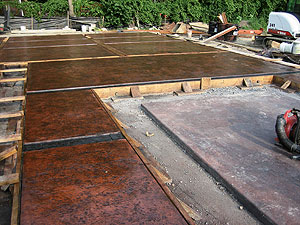
Logistical challenges aside, what does Tucker say he likes about the results?
“Everything! I just love it. I love decorative concrete and I think this is just beautiful. Tilt-up generally only has joint lines or reveals to give it character. Or you can paint it. That’s it. This puts the decorative feel into tilt-up construction. I think the possibilities are unlimited.”
The technique promises to be more than a novelty. Tucker says a lot of people have expressed interest in the process. He sees potential for residential construction, especially for rebuilding in hurricane-ravaged areas. So who knows? This backward approach may be the next step forward in architectural concrete.
Pattern-Crete Inc. warehouse/shop
Villa Park, Ill.
Builder: Pattern-Crete Inc.
Owner: Ken Tucker
www.patterncreteinc.com
